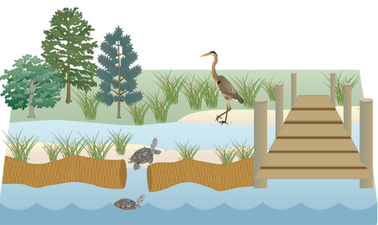- Level Foundation
- Ratings
- Duration 32 hours
- Course by University of Maryland Center for Environmental Science
- Total students 3,908 enrolled
-
Offered by

About
Effective science communicators are in short supply during a time of unprecedented environmental challenges. As policy-makers, businesses, and communities seek solutions, the need for science communication skills will only grow. In this course, you will not only learn how to identify the tools of science communication, but will be able critique, refine, and develop them.
Any leader understands that data is the underpinning of competent decision-making. Complex systems require that data be presented in a clear and accessible format. You will learn to construct easy-to-interpret data visualizations that will enable you to build consensus and facilitate decisions across a broad spectrum of stakeholders.
Data tells us a story. Articulating and messaging this data-driven narrative to communicate the latest research is a key skill for any manager. You will learn to use proven techniques to develop such narratives so that you can effectively communicate complex data-sets to any audience.
Cogent science communication requires the effective integration of a captivating and accessible narrative with appealing multimedia data visualizations. These two new skills are the foundation for telling a larger story. Compelling "stories" are a proven approach to explain complex problems, involve the target audience, and motivate diverse stakeholders to work toward change.
What you will learn
- How to identify and critique features of science communication products that utilize effective visualization and narrative techniques.
- How to produce appealing data visualization that avoid ‘chart junk’ or ‘map clutter’.
- How to articulate a succinct, captivating narrative using the ‘and, but, therefore’ template.
- How to develop a compelling science communication product that integrates best-practice visualizations and concise narrative.
Skills you learn
Syllabus
Module 1:
- Why is science communication important?
- Iconic science communicators
- The science behind science communication
- What makes a good story?
- Who are you talking to?
- Narrative structure
Module 2:
- Data Visualization Part 1
- Data Visualization Part 2
- 10 Classic Conceptual Diagrams
- 10 IAN Conceptual Diagrams
- 10 Classic maps
Module 3:
- Storyboarding
- Active titles
- Storyboarding Process
- Project Management
- Seven Elements of Layout and Design
- Layout and Design Examples
- Critique and Review
Module 4:
- Color Theory
- Color Theory Basics
- Color in Science Communication
- Symbols and Diagrams
- Symbols
- Conceptual Diagram Creation
- Conceptual Diagram Examples
Module 5:
- Science Writing vs. Science Communication
- Science Communication Products
- Photos in Science Communication
- Videos in Science Communication
- Assembling a Scientific Presentation
- Presentation Preparation
- Delivering a Presentation
Auto Summary
"Strategic Communication for Sustainability Leaders" is an essential course for professionals and enthusiasts in the fields of environmental policy and sustainability. Offered by edX, this foundational course emphasizes the importance of effective science communication. Learners will gain expertise in creating impactful visualizations and weaving them into compelling narratives to elucidate complex ecosystem processes. Spanning 32 hours, the course is designed to accommodate various learning needs with both Professional and Starter subscription options. Ideal for those aiming to enhance their communication skills within the science and engineering domains, this course equips sustainability leaders with the tools to convey intricate scientific concepts clearly and persuasively.

William “Bill” Dennison

Richard Arnold


